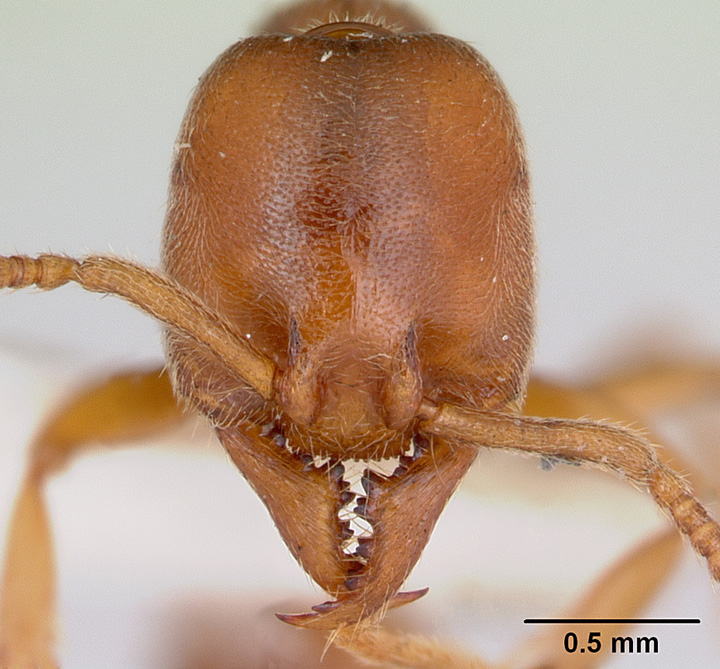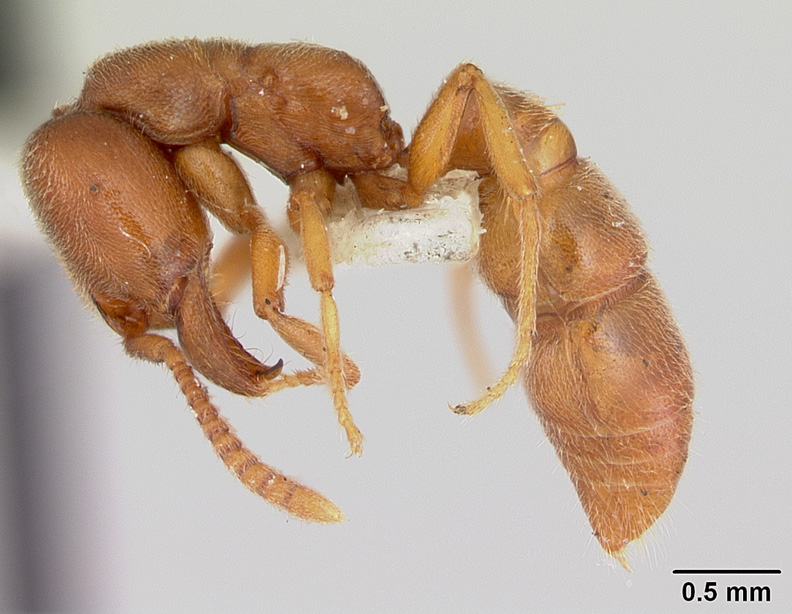Introduction
The genus Stigmatomma is found in tropical and temperate regions of the world. In the Nearctic region, they usually occur in wooded areas. Members of this genus are found in soil and leaf litter throughout the United States, except in the north central region. Currently, three species are recognized in the U.S., but only two have been found in the Southeast,Stigmatomma pallipes (Haldeman), a widespread species distributed throughout much of the United States, and A. trigonignatha Brown, known only from North Carolina.
Identification
Stigmatomma individuals range in size from 4 to 6.5 mm. They
possess very distinctive mandibles, which are long and linear with the
inner border having a row of coarse, bidentate teeth and a single, long,
curved tooth apically. The mandibles are inserted at the anterolateral
corners of the head. The anterior border of the clypeus is denticulate.
The eyes are minute. The antenna is 12 segmented and with a short scape.
The petiole is attached to the first gastral segment broadly, and only
separated by a constriction. Stigamatomma trigonignatha can be distinguished from S. pallipes by the lack of a tooth on each side of the head near the point of mandibular insertion and by the mandible being enlarged, appearing triangular near the base, rather than more or less slender for its entire length, as in S. pallipes.
Biology and Economic Importance
Little is known about the biology of this species other than it was sifted from leaf mold in a Berlese funnel (Smith, D. R., 1979). In North America, other species in the genus appear to be specialists on certain centipedes, and it seems likely that this species would be as well. Members of this genus are sometimes referred to as Dracula ants because queens of some species obtain much of their nutrients from hemolymph of their larvae. The queen, and sometimes workers, puncture the integument of the larvae, which results in a small drop of hemolymph, which is then lapped up. For more about this bizarre behavior, see Alex Wild's online article about the related species Stigmatomma oregonensis (link). It is not known whether this species also behaves in this manner.
Distribution
This rare species is only known from Concord, North Carolina, where it was describe by Brown (1960) .
Literature Cited
Brown, W. L. 1960. A new American Amblyopone, with notes on the genus (Hymenoptera: Formicidae). Psyche 56: 81-88.
Smith, D. R. 1979. In Catalog of Hymenoptera in America north of Mexico. Smithsonian Institution Press, Washington D. C. Vol. 2, pp. 1323-1427.
Links
AntWeb Images
|




